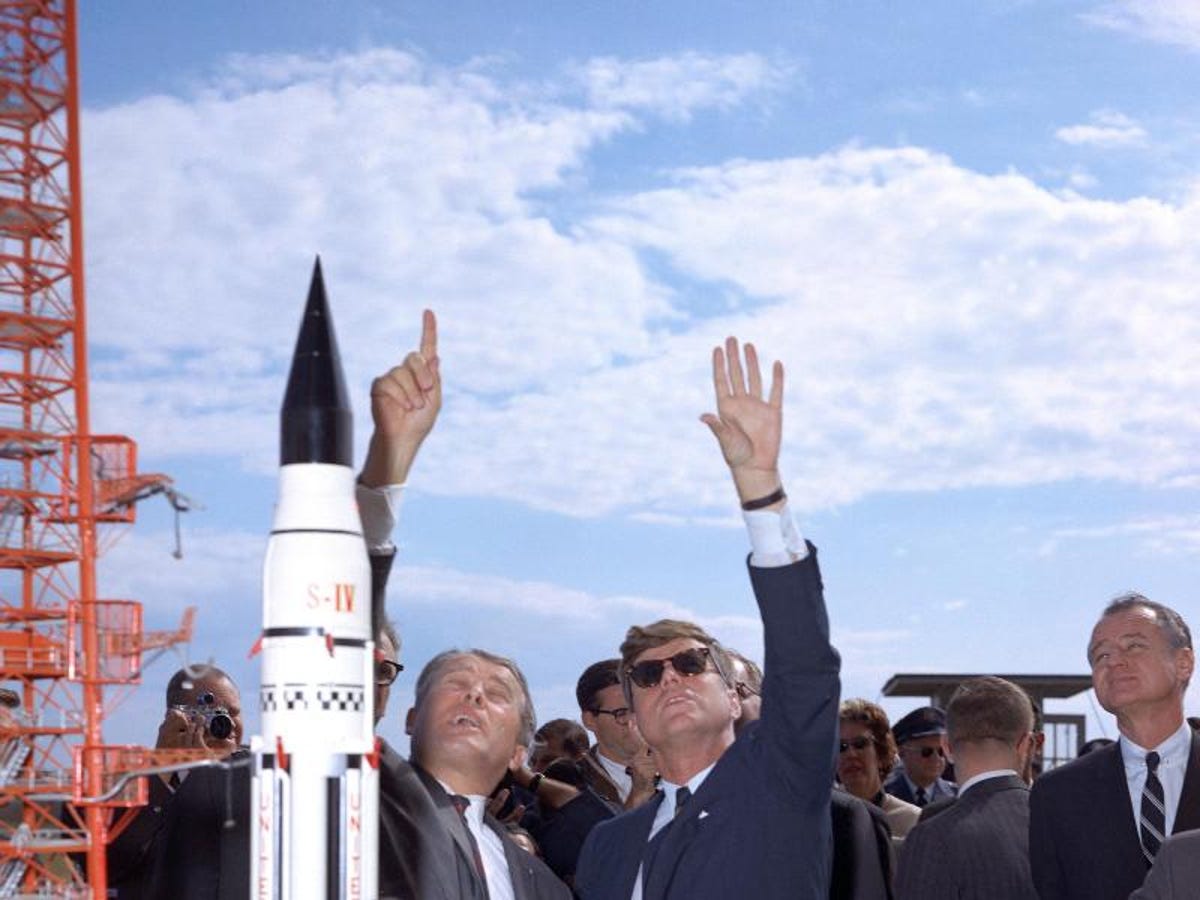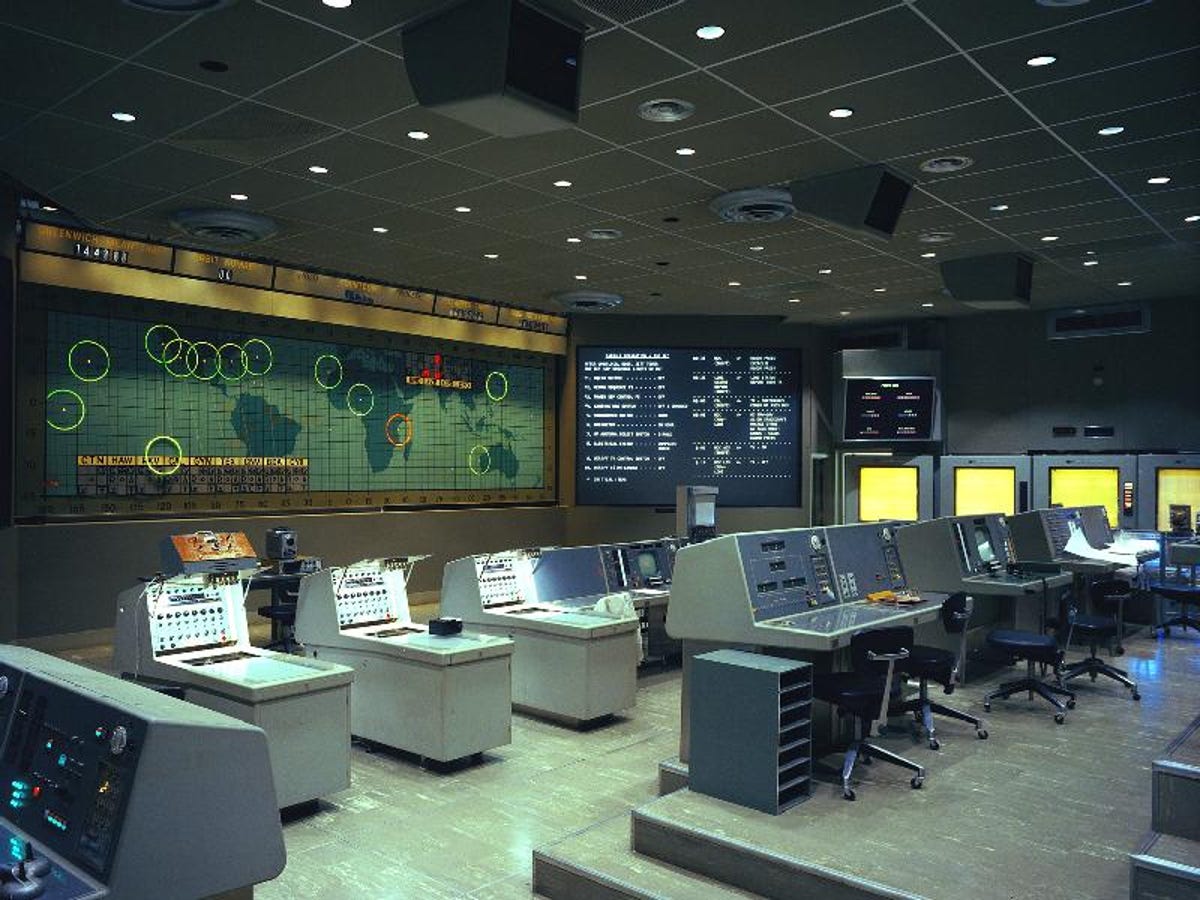Looking back 50 years at the Kennedy Space Center (pictures)
NASA's landmark facility on the Florida coast has been sending rockets and astronauts into space for a half-century. We take a look back at some of the early missions.

Kennedy and von Braun
And for the last half-century, his name has been affixed to the vast enterprise at the heart of America's many voyages into space, NASA's Kennedy Space Center. The space agency notes that it was 50 years ago this week, on July 1, 1962, that the launch facility at Cape Canaveral in Florida took on full-fledged center status, no longer under the auspices of the Marshall Space Flight Center in Alabama.
Here we see President Kennedy (wearing sunglasses) gazing skyward in the company of Wernher von Braun, the expatriate German scientist who was critical to the early development of the U.S. rocket program, during a trip to Cape Canaveral's Launch Complex 37 on November 16, 1963.
Saturn V briefing
In the company of astronauts
Mercury Control Center
Chris Kraft
Prelaunch simulation

For Mission Control, upgrades and downgrades
A plain gray shed
Vehicle Assembly Building, being assembled
Vehicle Assembly Building from above
Launch Pad 39A, a work in progress
Grissom, White, Chaffee
Apollo 7 liftoff
Long crawl for a rocket
Out of the garage
Command module
Armstrong in training
Apollo 11 crew
Apollo 11 liftoff
For more on the Apollo 11 mission, see "Photos: The Apollo 11 moon landing."
White shirts, dark ties
Florida turf, moon practice
Saturn V at the launch pad
Viking Lander 1
Shuttle, piggyback
Firing Room 1
Columbia on the crawl
Shuttle Columbia lifts off
For more about Columbia's first flight, see "When the space shuttle was new (photos)."

